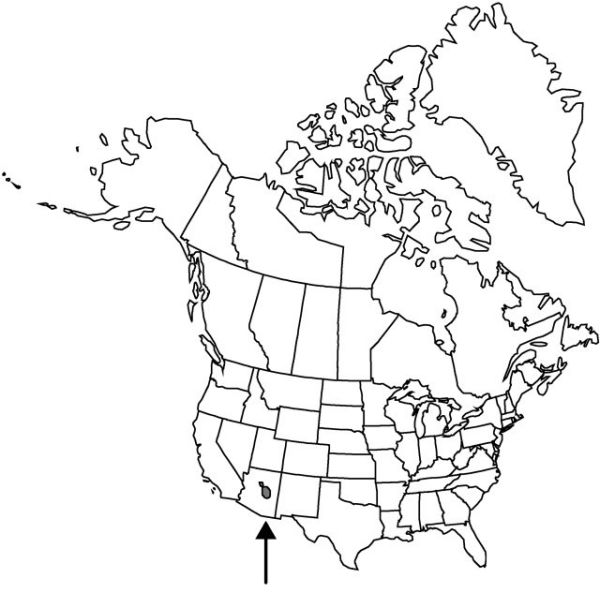Difference between revisions of "Agave delamateri"
Haseltonia 3: 133, figs. 1, 3–5. 1995.
FNA>Volume Importer |
imported>Volume Importer |
||
| (5 intermediate revisions by 2 users not shown) | |||
| Line 34: | Line 34: | ||
-->{{#Taxon: | -->{{#Taxon: | ||
name=Agave delamateri | name=Agave delamateri | ||
| − | |||
|authority=W. C. Hodgson & Slauson | |authority=W. C. Hodgson & Slauson | ||
|rank=species | |rank=species | ||
| Line 49: | Line 48: | ||
|publication year=1995 | |publication year=1995 | ||
|special status= | |special status= | ||
| − | |source xml=https:// | + | |source xml=https://bitbucket.org/aafc-mbb/fna-data-curation/src/2e0870ddd59836b60bcf96646a41e87ea5a5943a/coarse_grained_fna_xml/V26/V26_963.xml |
|genus=Agave | |genus=Agave | ||
|species=Agave delamateri | |species=Agave delamateri | ||
Latest revision as of 21:18, 5 November 2020
Plants acaulescent, freely suckering; rosettes solitary to cespitose, 9–10 × 9–10 dm, open. Leaves erect or erect-ascending, 50–63(–73) × 7.5–9 cm; blade glaucous-gray to -bluish, cross-zoned, lanceolate or oblanceolate, rigid, adaxially concave, abaxially convex; margins straight or repand, armed, teeth single, well defined, 3.5–5 mm, 1–3 cm apart, interstitial teeth (3–)6–12, mostly along distal 2/3 of margins; apex conspicuously incurved, spine brownish gray, slender, 2.8–3.5(–4.9) cm. Scape 4.5–6 m. Inflorescences broadly paniculate, not bulbiferous, open; bracts persistent, triangular, 1–5.5 cm; lateral branches 12–17, horizontal, comprising distal 3/5–5/8 of inflorescence, longer than 10 cm. Flowers 14–20 per cluster, erect, 4.7–6.7(–7) cm; perianth cream, tinged with light green, tube not shallow, campanulate, 11–16 × 11–16 mm, limb lobes persistent and often leathery during and after anthesis, spreading, unequal, 9–18 mm, apex flushed with maroon; stamens long-exserted; filaments inserted at 1 level ca. mid perianth tube, erect, yellow, 3–5.3 cm, apex flushed with maroon; anthers yellow, 11–20 mm; ovary 2.1–2.9 cm, neck slightly constricted, 1–3.5 mm. Capsules not seen. Seeds unknown.
Phenology: Flowering early summer.
Habitat: Gravelly places with desert scrub, rarely in chaparral or pinyon-juniper woodlands
Elevation: 700–1600 m
Discussion
Of conservation concern.
Agave delamateri is known only from about 90 individual clones and always in association with Mogollon or Salado settlement features. The plant is probably a cultivar derived from A. palmeri or a closely related taxon by pre-Columbian people. Agave delamateri hybridizes with A. chrysantha, acting as a pollen donor.
Selected References
None.
